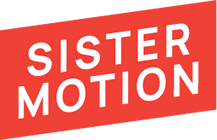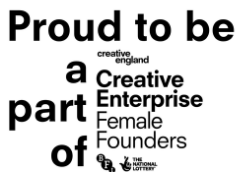Camera and Steadicam operator Kat Spencer has spent 15 years working her way up the department ladder. Today her work takes her around the world, from assisting on films by celebrated cinematographer Robert Richardson ASC or director Spike Lee to operating on Disney feature films and high-end TV.
Here she opens up about the importance of seeing – and being – a role model in the world of filmmaking.
“It’s hard to be what you can’t see.”
As a woman of mixed ethnicity who works as a camera and Steadicam operator, I really relate to something the great American civil rights activist Marian Wright Edelman said: “It’s hard to be what you can’t see.”
Although my father, mother and godmother worked in filmmaking, I spent my teens and early adulthood sensing that it wouldn’t be a possibility for me. Women working with cameras was not something I knew. I wasn’t encouraged to follow this path and didn’t have role models. But after so many years spent muzzling my gut instinct, I finally started my career by becoming a camera trainee at 25.
It’s now 15 years on, and I’m only just starting to see the unhealthy behaviours I learned along the way in order to fit into the male-dominated world in which I work. For example:
- When I was first starting out, I stopped dressing as myself. I wanted to be considered ‘one of the boys’ and opted for a work look that I would describe as unattractive and faceless.
- I learned to communicate to a group by first airing my ideas to a colleague. For reassurance, I would share with one person to let them make it public.
- In the same vein, I have had the experience of not being supported by some crew, and subsequently protected myself by turning down work opportunities that I didn’t think could or would offer the supportive environment I craved.
- I often felt I represented more than just myself, carrying a responsibility to other females on set (and everywhere).
- Responding to the pressure of being a minority on set, I was guilty of feeling competitive and solitary, driven to prove I deserved to be there by being better than others.
I’m happy to say though, both for myself personally and for the industry at large, positive changes are afoot. In my work in features and high-end TV, I’ve seen a shift among production companies and studios as they create codes of conduct alongside anti-harassment, bullying and mental health wellbeing programs and agendas. This in turn has led to conscious crewing, with the biggest changes happening on short form sets. It’s impressive to see initiatives providing equal opportunities in shadowing and apprentice roles coming from entities like Directors UK and Free the Bid.
In long form, we’re seeing fewer experienced female directors in that band of production coupled with support from experienced male cinematographers and other department heads. And although it’s quite normal to expect the trainee or second assistant camera to be a non-male now, there’s only a small pool of experienced women who are camera operators and Steadicam operators – so it’s less likely that you’ll see more than one female higher up in the camera team. This needs to change: it’s important that the junior crew have role models they can relate to and a culture that supports non-males as heads of department and creative leaders.
We all benefit when we work among people higher up the ladder who resemble ourselves. Their influence and wisdom is invaluable. In 15 years in the business, I’ve worked alongside just seven directors of photography and three operators who were women – and all of these were only daily engagements!
But in the same span of time, I’ve also worked on two shoots with all non-male crew. Both films centred on the topic of sex. These were stand-out great experiences. It made me realise that a set flooded with females shouldn’t be a rare occurrence, nor should it be subject-dependent.
Along my own career journey there have been colleagues – both men and women – who have gone out of their way to encourage and support me. So many of these have been life and career changing. For example, on a tough film in Jordan in 2017, my A camera operator encouraged me to try his Steadicam. As a result, I attended a workshop and became a camera and Steadicam operator.
That casual chat added up to permission to chase my dream. When someone believed that I was capable and could do it, that was all I needed to believe in myself and make it happen.
A community of female camera operators has developed through women wanting to connect, support and see other women succeed. It’s been important to each of us as minorities breaking barriers to help, share and champion each other’s journey.
By filtering out inherited cultural scripts and tackling the long-lasting effects of gender gaps, we are constructing a new truth for young girls. Seeing is believing, and I hope as we see more women on set, more will come to believe there’s a place for them too.
A case in point: my six-year old niece told me she wants to grow up to do what I do.
Kat Spencer is just one of many talented women in the Sister Motion talent collective.
To connect with Kat on Instagram click @KatKamera


